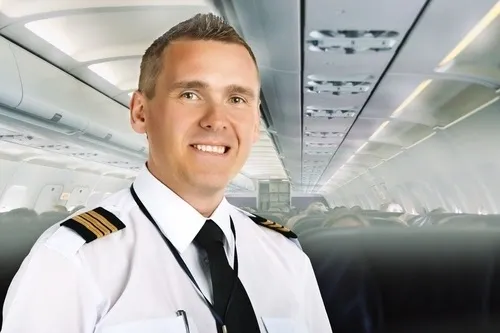Nationwide Pilot Shortage

People are finally excited to travel again, two years after the pandemic wreaked havoc on the airline industry. But now, a problem that was a long-time coming has arisen: a shortage of pilots. Now that bookings are up and the public is ready to go, pilots are needed around the nation.
FAA data proves that the U.S. is producing more pilots now than before COVID in order to remedy the current shortage. It’s a good thing, too, since major airlines are predicted to hire between 12 and 13 thousand pilots in 2023, with more continuing to be hired in 2024. Since a career as a pilot is lucrative and respected, what’s behind these shortages?
Pandemic Bookings
First of all, bookings dropped over 90% two years ago, and financial ruin loomed over the industry. A single day in April 2020 depleted airline bookings, and without bookings, airlines had no revenue to work with. Although airlines were able to recoup a bit once the CARE Act was passed, helping employers to keep their workers on the payroll, the damage was done.
However, as data from 2021 is collected and analyzed, evidence points to a recovering industry with only 11% net losses. The industry is on its way back to healthy levels. The saviors of most airlines ended up being their freight and cargo lines, so having enough qualified pilots to fly these machines is essential for the industry. In 2020, air cargo income for airlines increased by 40%, and the data from 2021 points to an additional 15% increase. That’s good news for airlines and even better news for potential pilots.
Mass Retirement
When flight bookings dipped in April of 2020, airlines offered early retirement for pilots close to retirement age. With baby boomers making up nearly half of all pilots, many of them jumped at the chance to skip the pandemic problems and head to the front of the line for retirement. Fast forward to 2022; almost 6,000 pilots each year are hitting the blissful age of 65, the FAA’s mandated retirement age for pilots. That means that by 2029, all baby boomers will have “aged out” of the industry, leaving major gaps in their wake. The need for more trained pilots is evident.
Disrupted Training Programs
Another problem that the pandemic caused was that, like any other in-person training programs, pilot training programs faced major disruptions. That means that the number of qualified pilots took hits on more than one front: while experienced pilots retired early, new pilots had their training delayed. Fewer opportunities for training meant fewer sport, recreational, commercial, and airline pilots. If you have experienced a disruption in your training, Safe Flight Aviation can help you finish your pilot certifications sooner than you think.
Adaptation was necessary, and the industry has learned and changed as a result. Even U.S. Secretary of Transportation Pete Buttigieg acknowledges the changes that need to be made. He believes that “the answer is not to keep the Baby Boomer generation in the cockpit indefinitely. The answer is to make sure we have as many and as good pilots ready to take their place, to have a stronger pipeline.”
Pilots of the Future
In other words, now is the best time to train to become a pilot. Regardless of the specific type of pilot, you’d like to be, the U.S. flight industry is offering unprecedented opportunities for individuals who want to start a respected and stable career as a pilot. Today, a “stronger pipeline” to the cockpit includes programs that don’t require an expensive and extensive four-year degree program for those who want to launch their new career.
According to the U.S. Bureau of Labor Statistics, the 2021 Median Pay for airline pilots, copilots, and flight engineers was $202,180, and the median pay for commercial pilots was $99,640. So, if you’re looking for a career with approximately 18,100 openings available each year that offers a stable financial future, consider this your sign that it’s time to start training as a pilot.
